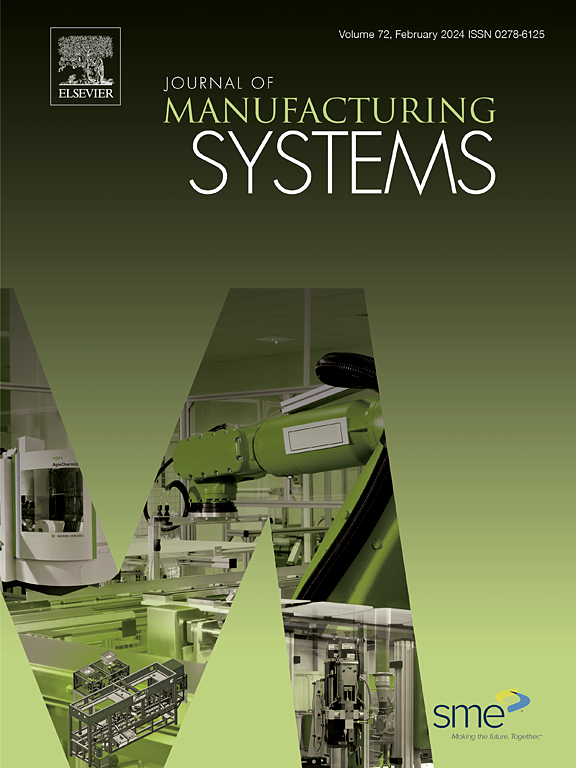工业系统中自动仿真模型的生成:系统的文献综述和工业5.0中仿真技术的展望
IF 14.2
1区 工程技术
Q1 ENGINEERING, INDUSTRIAL
引用次数: 0
摘要
在正在进行的工业数字化热潮中,仿真模型是决策支持的关键使能技术。在工业4.0中,模拟被广泛使用,提供对工业行为和反应的见解。随着我们向工业5.0迈进,仿真模型在实现可持续、有弹性和以人为本的工业系统方面继续发挥着关键作用。然而,工业4.0/5.0中的一个持续挑战是工业环境的大量动态。这种动态和复杂的景观需要开发适应性解决方案,能够快速响应现代工业系统多变的工艺要求。为此,自动仿真模型生成(ASMG)提供了一个创新的方法框架来解决工业仿真模型开发中的这一实际挑战。本研究采用系统评价和荟萃分析的首选报告项目(PRISMA)方法,系统地回顾了ASMG目前的最新进展。通过对20多年(2000年至2023年)61篇文章的文献计量学和内容分析,本文通过关注ASMG发展战略、目标、基本数据和发展环境的四个研究问题来评估ASMG在制造业中的进展和应用。最后,本文为工业仿真专家提供了ASMG视角的宝贵见解,并为工业5.0时代的未来发展提供了指导方针。本文章由计算机程序翻译,如有差异,请以英文原文为准。
Automatic simulation models generation in industrial systems: A systematic literature review and outlook towards simulation technology in the Industry 5.0
Simulation models are a crucial enabling technology for decision support in the ongoing industrial digitalization hype. Within Industry 4.0, simulations are extensively utilized, providing insights into industrial behavior and responses. As we progress towards Industry 5.0, simulation models continue to play a pivotal role in achieving sustainable, resilient, and human-oriented industrial systems. However, a persistent challenge within Industry 4.0/5.0 is the substantial dynamism of industrial environments. This dynamic and complex landscape necessitates the development of adaptive solutions capable of swiftly responding to the volatile process requirements of modern industrial systems. To this end, Automatic Simulation Model Generation (ASMG) offers an innovative methodological framework to address this practical challenge in the development of industrial simulation models. Employing the Preferred Reporting Items for Systematic Reviews and Meta-Analyses (PRISMA) methodology, this research systematically reviews the current state-of-the-art in ASMG. Complemented by a bibliometric and content analysis of 61 articles spanning more than two decades (from 2000 to 2023), the paper evaluates ASMG’s progression and application in manufacturing through four research questions focusing on ASMG development strategies, objectives, essential data, and developing environments. Ultimately, this article provides valuable insights into ASMG perspective for industrial simulation specialists and offers guidelines for future developments in the era of Industry 5.0.
求助全文
通过发布文献求助,成功后即可免费获取论文全文。
去求助
来源期刊

Journal of Manufacturing Systems
工程技术-工程:工业
CiteScore
23.30
自引率
13.20%
发文量
216
审稿时长
25 days
期刊介绍:
The Journal of Manufacturing Systems is dedicated to showcasing cutting-edge fundamental and applied research in manufacturing at the systems level. Encompassing products, equipment, people, information, control, and support functions, manufacturing systems play a pivotal role in the economical and competitive development, production, delivery, and total lifecycle of products, meeting market and societal needs.
With a commitment to publishing archival scholarly literature, the journal strives to advance the state of the art in manufacturing systems and foster innovation in crafting efficient, robust, and sustainable manufacturing systems. The focus extends from equipment-level considerations to the broader scope of the extended enterprise. The Journal welcomes research addressing challenges across various scales, including nano, micro, and macro-scale manufacturing, and spanning diverse sectors such as aerospace, automotive, energy, and medical device manufacturing.
 求助内容:
求助内容: 应助结果提醒方式:
应助结果提醒方式:


